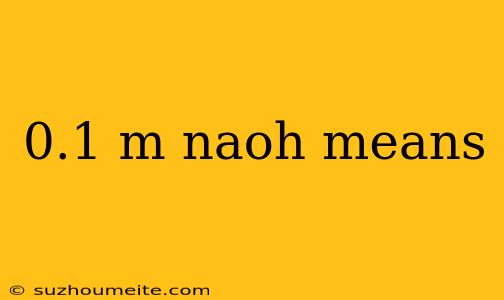What does 0.1 M NaOH mean?
In chemistry, you may have come across the term "0.1 M NaOH" and wondered what it means. In this article, we'll break down the components of this notation and explain what it represents.
M NaOH: What does it stand for?
"NaOH" is the chemical formula for sodium hydroxide, also known as caustic soda or lye. It's a strong base commonly used in various industrial and laboratory applications.
The "M" in "0.1 M NaOH" stands for molar, which is a unit of concentration in chemistry. A molar solution is one that contains one mole of solute (in this case, NaOH) per liter of solution.
What does the 0.1 represent?
The "0.1" in "0.1 M NaOH" represents the concentration of the solution in moles per liter (mol/L). In other words, a 0.1 M NaOH solution contains 0.1 moles of NaOH per liter of solution.
To put this into perspective, a mole is a unit of measurement that represents 6.022 x 10^23 particles (in this case, molecules of NaOH). Therefore, a 0.1 M NaOH solution contains 0.1 x 6.022 x 10^23 molecules of NaOH per liter of solution.
Practical applications of 0.1 M NaOH
Sodium hydroxide is a strong base with a wide range of applications, including:
Titration
In analytical chemistry, 0.1 M NaOH is often used as a titrant to neutralize acidic substances. The equivalent point is reached when the amount of NaOH added is equal to the amount of acid present, allowing researchers to determine the concentration of the acid.
pH adjustment
NaOH is also used to adjust the pH of solutions in various industries, such as water treatment, pharmaceuticals, and food processing. A 0.1 M NaOH solution can be used to increase the pH of a solution, making it more alkaline.
Cleaning and degreasing
The strong basic properties of NaOH make it an effective cleaning agent for removing grease, oils, and other impurities from surfaces.
In conclusion, "0.1 M NaOH" represents a solution containing 0.1 moles of sodium hydroxide per liter of solution. This concentration is commonly used in various applications, including titration, pH adjustment, and cleaning.
